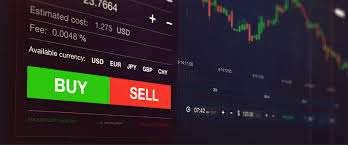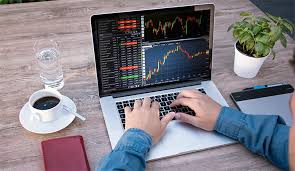
In the world of Forex trading, understanding various financial terminologies is crucial for traders aiming to optimize their potential profits. One such term that often crops up is “swap.” The concept of swap can significantly affect the overall cost and returns on trades. This article delves deep into what a swap is in Forex, how it operates, its implications for traders, and practical tips on how to manage it effectively. For comprehensive insights into trading, visit what is swap in forex trading Trading Area NG, a valuable resource for both novice and seasoned traders.
What is Swap in Forex?
In simple terms, a swap in Forex refers to the interest paid or received for holding onto a position overnight. In the Forex market, where currencies are traded in pairs, a swap fee is assessed based on the difference in interest rates between the two currencies involved in the trade. When a trader opens a position that remains active past a certain time (usually past 5 PM EST), they may receive or pay a swap fee.
Understanding the Mechanics of Swap
The swap calculation is based on a few key factors:
- Interest Rates: The primary factor determining whether you pay or receive a swap is the interest rates set by the central banks of the respective countries. Each currency has a corresponding interest rate, which affects the swap calculation.
- Position Size: The size of your position can impact the total amount of swap fees. Larger positions typically incur higher swap fees, both positive and negative.
- Trade Direction: If you are buying a currency with a higher interest rate and selling one with a lower rate, you will generally receive a positive swap. Conversely, if the opposite is true, a negative swap fee will apply.
Why is Swap Important for Forex Traders?
Swap costs can play a significant role in a trader’s profitability, especially for those who hold positions for extended periods. Here are some reasons why understanding swap is important:
- Cost of Trading: If you are holding positions overnight, the swap fee can significantly affect your overall profit or loss. Traders who are unaware of these fees might be surprised when they find their profits diminished due to swap costs.
- Profiting from Swaps: Some traders utilize swap rates in their trading strategies by selecting pairs with favorable interest rates to earn positive swaps. This strategy can be particularly appealing for long-term Forex traders who hold positions for weeks or months.
- Impact on Strategy: Incorporating swap considerations into your trading strategy is essential for long-term success. Traders may choose to close positions before the swap fee is applied to avoid incurring additional costs.
Types of Swaps in Forex
There are generally two types of swaps in Forex:

- Positive Swap: This occurs when the interest rate of the currency you are buying is higher than that of the currency you are selling. In this scenario, a trader would receive interest from the broker, effectively boosting their profits.
- Negative Swap: In contrast, a negative swap happens when the interest rate of the currency being bought is lower than that of the currency sold. These fees would be deducted from the trader’s account, leading to reduced profits.
How to Calculate Swap in Forex
Calculating the swap can vary between brokers, but the basic formula generally follows:
Swap = (Pip Value x Swap Rate) / 10
Here’s a breakdown of the formula:
- Pip Value: This refers to how much a pip movement in a currency pair is worth in your account currency.
- Swap Rate: This percentage is determined by your broker based on the interest rates of the respective currencies.
Managing Swap Fees Effectively
To minimize the impact of swap fees on your trading account, consider the following strategies:
- Avoid Overnight Positions: If feasible, close your positions before the swap fee applies. This approach is particularly useful for day traders.
- Choose Currency Pairs Wisely: Look for currency pairs that provide favorable swap rates. Utilize your broker’s resources to find this information.
- Consider Swap-Free Accounts: Some brokers offer swap-free accounts, ideal for traders who wish to avoid swap fees entirely, often popular among traders adhering to Islamic finance principles.
Conclusion
In conclusion, the swap is an essential concept for Forex traders, influencing the costs associated with holding positions overnight. By understanding how swap fees work and taking appropriate measures to manage them, traders can significantly optimize their trading experience. Knowledge of currency pair characteristics and effective trading strategies can ultimately provide insights into fostering a more profitable trading journey.


